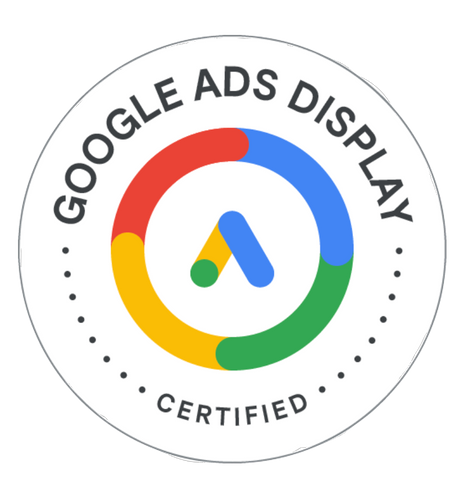What is the Corporate Storytelling Matrix?
The Corporate Storytelling Matrix is a strategic framework that ensures your brand’s core narrative remains consistent and compelling across every customer interaction point, from your website and social media to PR campaigns and face-to-face meetings. This approach creates a unified brand experience that builds trust and recognition regardless of where customers encounter your business.
Picture this: A potential client discovers your company through a LinkedIn post that showcases your innovative approach and company culture. Intrigued, they visit your website, which tells a completely different story about being “established and traditional.” Later, they meet your sales team at a networking event in Atlanta, where the conversation feels disconnected from both previous experiences. By the time they’re ready to make a decision, they’re not sure who you really are.
This scenario plays out more often than most business leaders realize. Companies invest heavily in individual marketing channels—beautiful websites, engaging social content, polished PR campaigns—but fail to ensure these efforts work together to tell one cohesive story. The result? Confused prospects, weakened brand trust, and missed opportunities.
The solution lies in what we call the Corporate Storytelling Matrix: a strategic framework that aligns your narrative across every touchpoint where customers encounter your brand.
The Hidden Cost of Misaligned Messaging
When your storytelling lacks consistency, each conflicting message chips away at your brand’s credibility. Customers quickly form impressions of your trustworthiness, and inconsistent messaging sparks hesitation from the start.
When brand impressions conflict across touchpoints, you’re not just creating confusion—you’re actively training prospects to question your reliability. Rather than clearly understanding how you can solve their problems, potential clients waste mental energy trying to reconcile conflicting brand messages. The cognitive burden this creates often leads prospects to simply move on to competitors who present a clearer, more cohesive narrative.
This is especially problematic when your website—often the first impression potential customers have—doesn’t align with your other forms of communication. Even if you think your website doesn’t need updating, misaligned messaging across platforms can undermine the strongest web presence.
Our team regularly works with Atlanta-based companies who’ve experienced this challenge firsthand. Take our work with KRM Investment Counsel, for example. When they came to us, they needed to establish a cohesive brand presence that would consistently communicate their values of personalization, comprehensive service, and expertise across every client touchpoint—from their logo and website to their business cards and future marketing materials. By developing a comprehensive brand guide alongside their digital presence, we ensured that whether a potential client encounters them online or in person, they experience the same professional, trustworthy narrative about who KRMIC is and what they offer.
For more examples of our work in corporate video production, check out our portfolio.
Understanding the Four Pillars of Story Alignment
Through years of helping companies tell cohesive stories across all platforms, our team has identified four fundamental pillars that make story alignment actually work in practice.
Core Narrative Foundation Your foundation includes the essential elements that never change: your company’s origin story, fundamental values, and unique market position. This isn’t about crafting marketing copy—it’s about uncovering the authentic story that already connects everything your company does. Often, companies discover that their existing messaging no longer reflects who they’ve become. That’s when a brand refresh becomes essential to realign the narrative with their evolved identity.
We’ve found that companies often assume everyone internally understands their core story, but when we interview different team members, we frequently discover significant differences in how they describe the company’s mission and values. Building this foundation takes more than a mission statement—you need a clear, compelling narrative that everyone on your team can confidently share.
Audience-Specific Adaptations While your core story remains constant, how you tell it must adapt to different audiences and contexts. You communicate differently with potential employees, prospective clients, and industry partners— and each requires its own tailored approach.
Our content team approaches this by developing what we call “story translations”, different versions of your core narrative tailored to specific audience needs while maintaining the essential truth of who you are. A technology company might emphasize innovation and cutting-edge solutions when speaking to early adopters, while highlighting reliability and proven results when addressing enterprise clients.
Channel-Specific Optimization Each communication channel has its own best practices and audience expectations. LinkedIn content performs differently than Instagram posts; press releases follow different conventions than website copy; and in-person presentations call for a different approach than email campaigns. Finding your brand’s authentic social voice requires understanding these platform nuances while maintaining your core narrative.
Here’s what we’ve learned from our production work: channel optimization should enhance your story, not change it. When we create video content for a client’s social media versus their website, we’re not telling different stories; we’re adapting the same story to work effectively within each platform’s unique environment.
Feedback Loop Integration Effective storytelling needs continuous refinement based on how it’s actually performing in the real world. This means tracking not just engagement metrics, but also qualitative feedback about how well your message resonates across different touchpoints.
Our team has found that regular check-ins with customer-facing employees are key to effective story alignment. Sales teams, customer service representatives, and account managers provide invaluable insights about how well your messaging translates in actual conversations with prospects and clients.
Building Your Storytelling Matrix: The Professional Approach
Creating an effective storytelling matrix requires systematic planning and coordination across all communication channels. This isn’t a project that can be completed in an afternoon—it’s a strategic initiative that touches every aspect of how your company communicates.
Documentation and Distribution Strategy Story alignment that actually works starts with comprehensive documentation that goes far beyond simple brand guidelines. This includes detailed messaging frameworks, approved language for different scenarios, and clear guidance about how to adapt your core story for various audiences and channels.
Our experience creating content across multiple platforms has taught us that this documentation must be practical and accessible. Teams need quick reference guides they can actually use during client calls, not lengthy brand manuals that gather digital dust. We often recommend creating scenario-based guidelines that help team members navigate common situations while staying true to the company’s core narrative.
Cross-Channel Content Strategy Rather than treating each communication channel as a separate entity, professional storytelling alignment requires viewing all channels as components of a larger narrative ecosystem. Your website, social media, PR efforts, sales materials, and even internal communications should work together to reinforce your key messages.
This integrated approach means thinking strategically about how video marketing content flows between channels. A successful product launch, for example, should be supported by coordinated messaging across your website, social platforms, press releases, and sales team talking points. Each piece reinforces the others while serving its specific purpose within that channel.
Training and Implementation Even the best storytelling framework fails without proper implementation across your organization. Every team member who interacts with customers—from receptionists to executives—needs to understand and confidently communicate your core story.
Implementation that sticks goes beyond simply sharing guidelines. It involves role-playing scenarios, providing examples of effective story adaptation, and creating systems for ongoing feedback and refinement. Our team has seen companies transform their market perception simply by ensuring everyone tells the same compelling story about who they are and what they offer.
Industry Applications: Where Story Alignment Matters Most
Different industries face unique storytelling challenges, but the need for alignment remains universal. Professional service firms often struggle with balancing expertise demonstration with approachability. Technology companies frequently battle between technical accuracy and accessible communication. Healthcare organizations must navigate regulatory requirements while maintaining human connection.
In our work with Atlanta-based businesses across various sectors, we’ve noticed that companies in highly competitive markets benefit most dramatically from story alignment. When prospects are evaluating similar options, consistent messaging becomes a significant differentiator.
Manufacturing companies, for instance, often excel at explaining their processes and capabilities but struggle to communicate their company culture and values consistently. Whereas, service-based businesses might have compelling case studies but fail to connect those successes to a broader narrative about their approach and philosophy.
Measuring Success: Beyond Metrics
Story alignment delivers measurable results, but not always in ways that traditional marketing metrics capture. Yes, you’ll likely see improvements in engagement rates, conversion percentages, and customer retention. But the most significant benefits often show up in qualitative feedback: prospects who say your message resonated with them, clients who refer to specific aspects of your story during testimonials, and team members who feel more confident representing your company.
Our team tracks story alignment success through multiple lenses. We monitor traditional engagement metrics across all channels, but we also pay close attention to message consistency in customer feedback, sales team confidence levels, and the quality of inbound inquiries. Companies with well-aligned storytelling typically attract better-fit prospects because their clear, consistent message helps pre-qualify potential clients.
Moving Forward: The Strategic Investment
Building a Corporate Storytelling Matrix isn’t just about better marketing—it’s about creating a stronger foundation for your business as a whole. When every touchpoint reinforces your core narrative, you’re not just communicating more effectively; you’re creating a cohesive brand experience that builds trust, reduces confusion, and accelerates decision-making within the consumer.
The complexity of aligning messaging across multiple channels, audiences, and team members is precisely why many successful companies work with professional teams who understand both strategic storytelling and tactical implementation. At Lucie Content, we’ve seen the transformative power of well-executed story alignment in businesses across Atlanta and beyond.
Your story is already there—in your company’s achievements, values, and unique approach to serving clients. The question isn’t whether you have a compelling narrative; it’s whether you’re telling it consistently and strategically across every opportunity to connect with your audience.
Ready to align your story across all touchpoints? Let’s discuss how professional storytelling alignment can strengthen your market position and accelerate your business growth. Contact Lucie Content today to get started.











